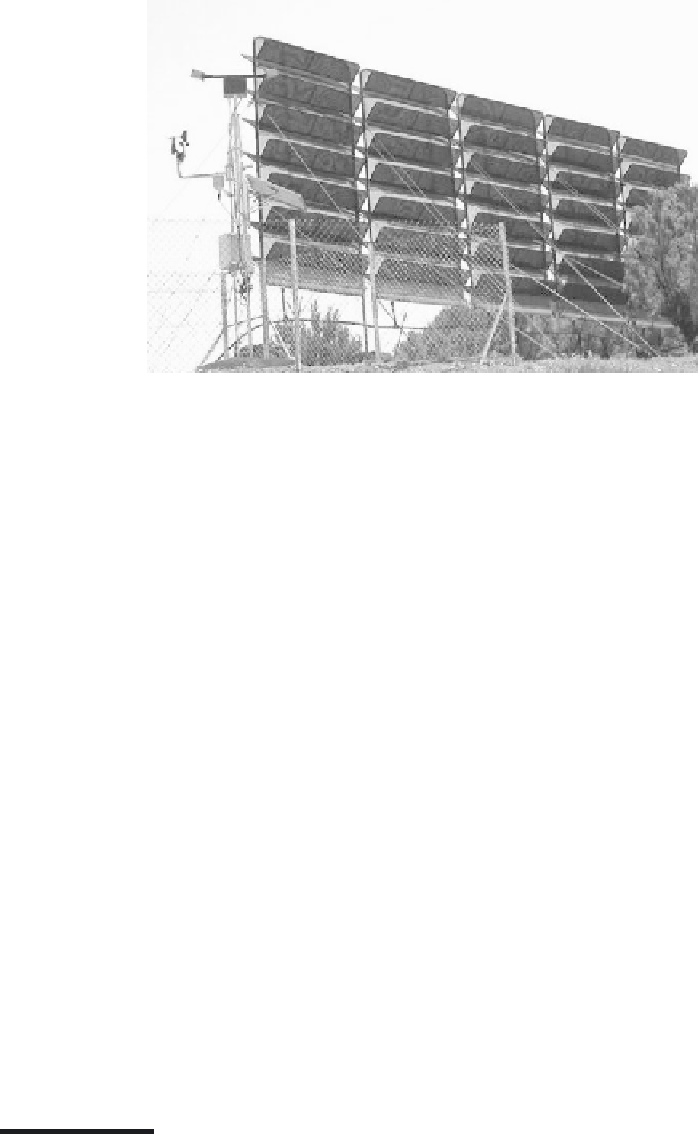Environmental Engineering Reference
In-Depth Information
FIGURE 29.1
(See color insert.)
AWC station with real-time weather and capture.
any other way. A world of design ideas and tested experimental materials and methods
are now available to all.
Several projects are currently under way worldwide to optimize the methods and tech-
niques, including two noteworthy ones. In the University of Washington (Seattle, WA), the
SQWater project (“SQ” refers to squatter communities, as the original focus was on slums;
of course, “SQWater” is a homonym) by Benjamin Spencer and Susan Bolton (cfpub.epa.gov
/ncer_abstracts/index.cfm/fuseaction/display.abstractDetail/abstract/9866/report/0), is tak-
ing place, where a pioneering acoustic fog precipitation as a means of increasing fog collection
yields will be explored in conjunction with the Universidad Nacional Mayor de San Marcos
(UNMSM, Lima) and a northern urban area in Lima (cfpub.epa.gov/ncer_abstracts/index
.cfm/fuseaction/display.abstractDetail/abstract/9866/report/0).
Our project is described in this chapter and led by the authors (Recio and Ahmad), both
experts in water capture systems with considerable background experience, and working
with the 42TEK Company, and in a joint project study in conjunction with AITEX (Instituto
Tecnológico Textil), AIDICO (Instituto Tecnológico de la Construcción), and AIMME (Instituto
Tecnológico Metalmecánico), three of the inest cutting-edge technical institutes dedicated to
nanotechnology applications in the textile, metal, and construction industries, respectively, in
Europe.
The results of these new PAFCs contemplate heterogeneous photocatalysis [4] for
decontamination, renewed sail designs, new stronger substrate materials replacing nylon
raschel, and will include systems capable of providing pure water by the suitable applica-
tion of nanoiltration products used on these suitably coated adaptive substrates, reducing
the 400 m barrier currently limiting their suitable deployments [5-7].
29.2 History of PAFCs
It is not well known when it was irst discovered that it was possible to extract water from
fog or sea mist even in extreme conditions such as those found in the arid Atacama Desert,

